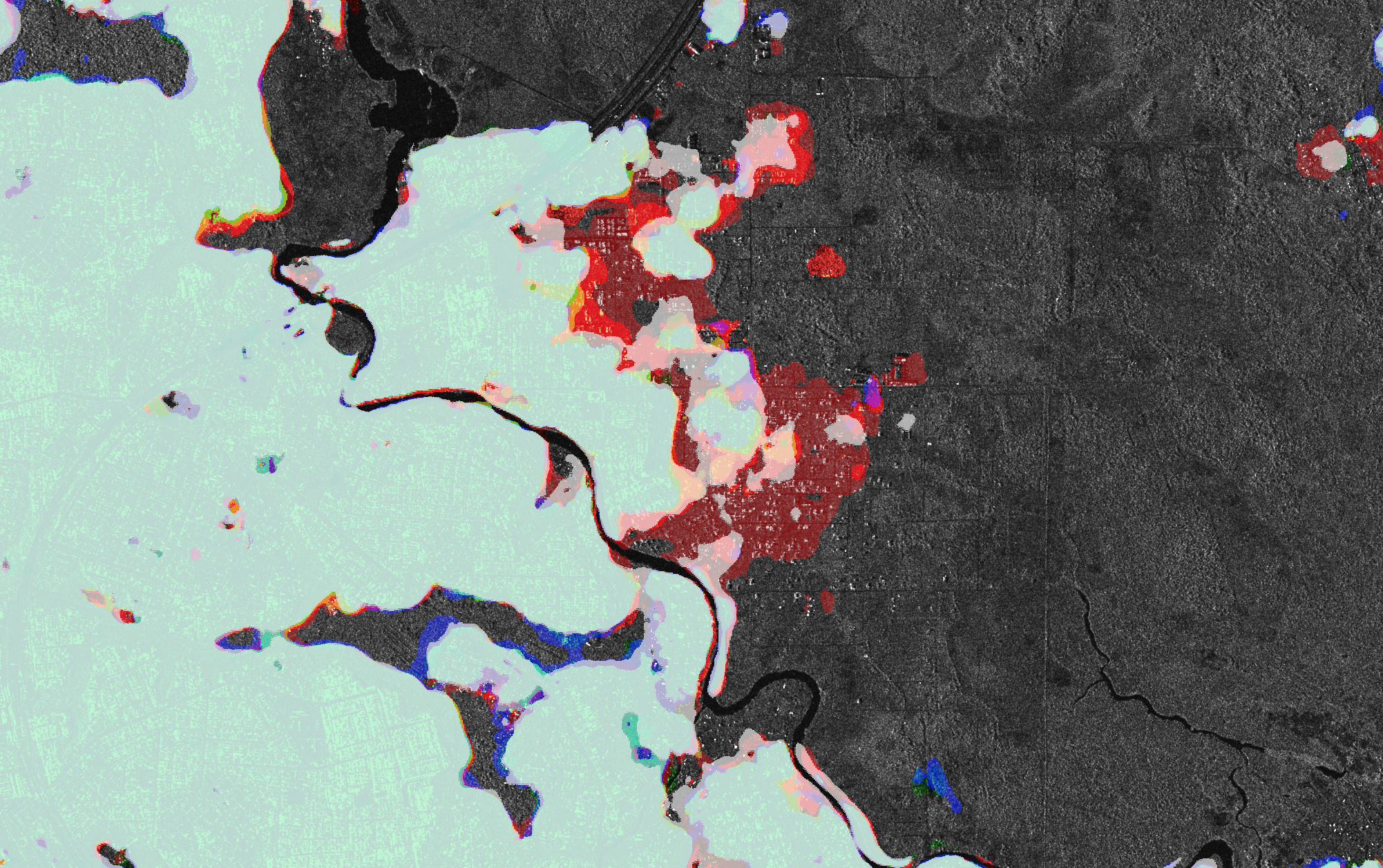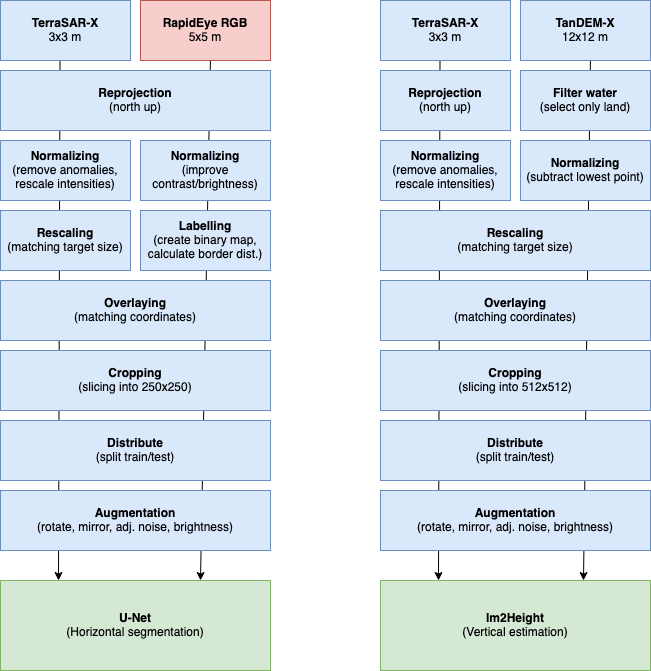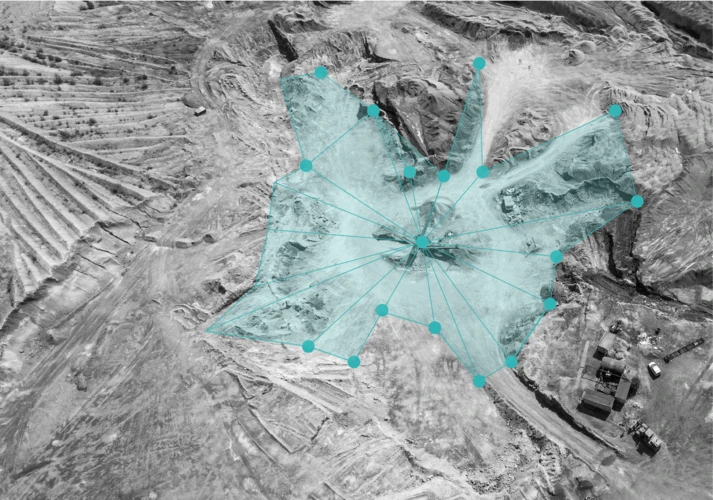Background
Urban planning authorities employ a number of GIS experts experienced working with GIS software such as ArcGIS. For long-term infrastructure planning, very high resolution is required at the building level. For this reason, drone or LIDAR images from flights are purchased. Since flights are very cost-intensive, these flights are carried out every two to ten years, depending on the available financial resources. This is insufficient due to the growth dynamics of these cities.
Satellite data is, although providing a lower spatial resolution, complimentary due to the higher update frequency. In practice, Bing and Google Maps are often used. However, the time interval of these images differs as e.g. Google Maps stitches together cloud-free images when available. Moreover, for countries outside of Northern America and Europe, the update frequency is rather low, resulting in less recent imagery for African cities.
Our Solution
As optical and elevation data have their respective downsides concerning cloud cover and update intervals, we decided to build a solution based on radar data with the highest time and spatial resolution possible. Research indicated that urban planners primarily work with very high-resolution data such as drone imagery and currently conduct their analysis of expanding urban areas approximately once a year or every two years. We decided that higher spatial resolution was preferred over time frequency. There were two options: TerraSAR-X StripMap or Sentinel-1. As TerraSAR-X provided a higher resolution, we chose it as the primary data source for both tasks.
All satellite data were then preprocessed to prepare for feeding into a Machine Learning model.







